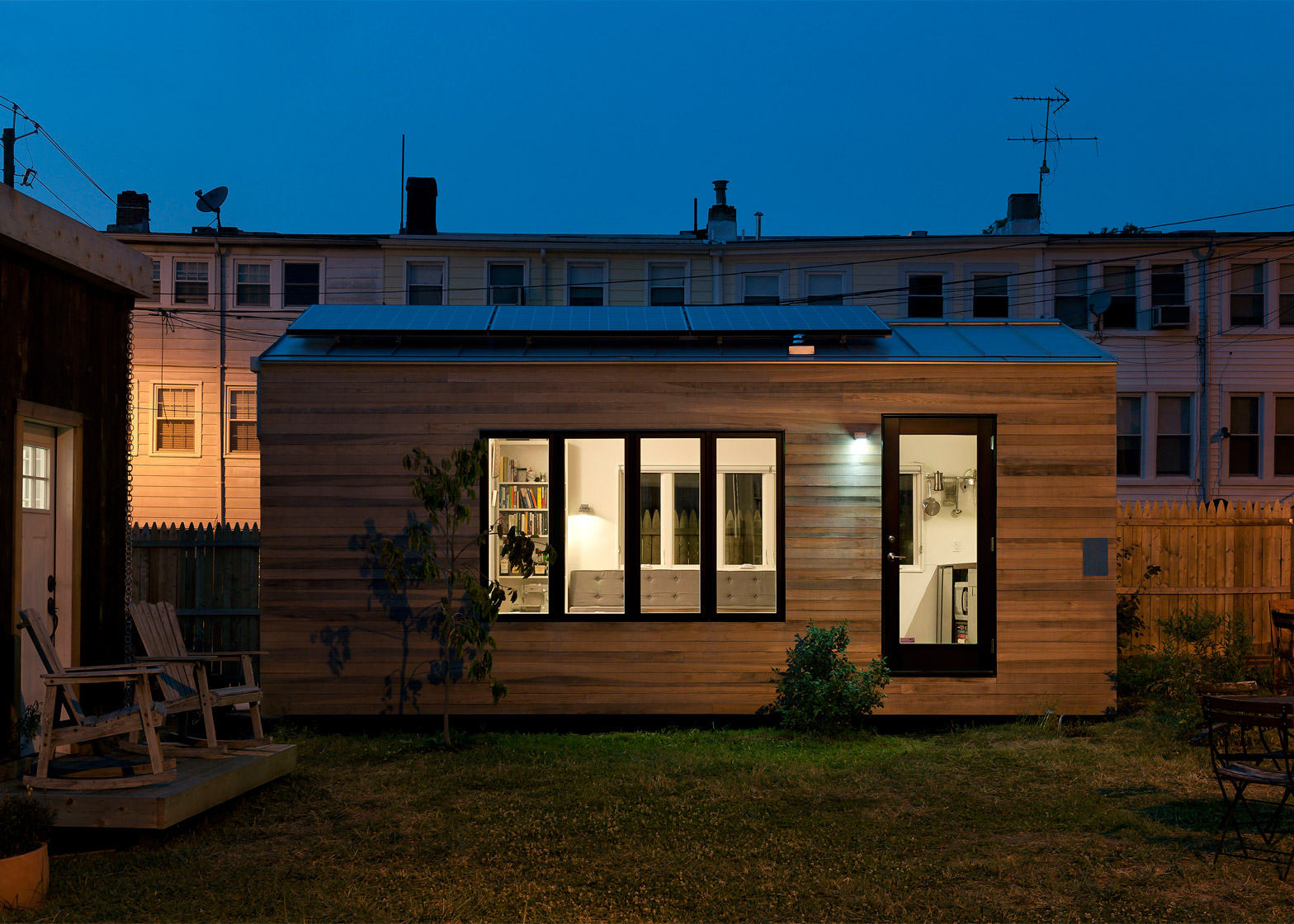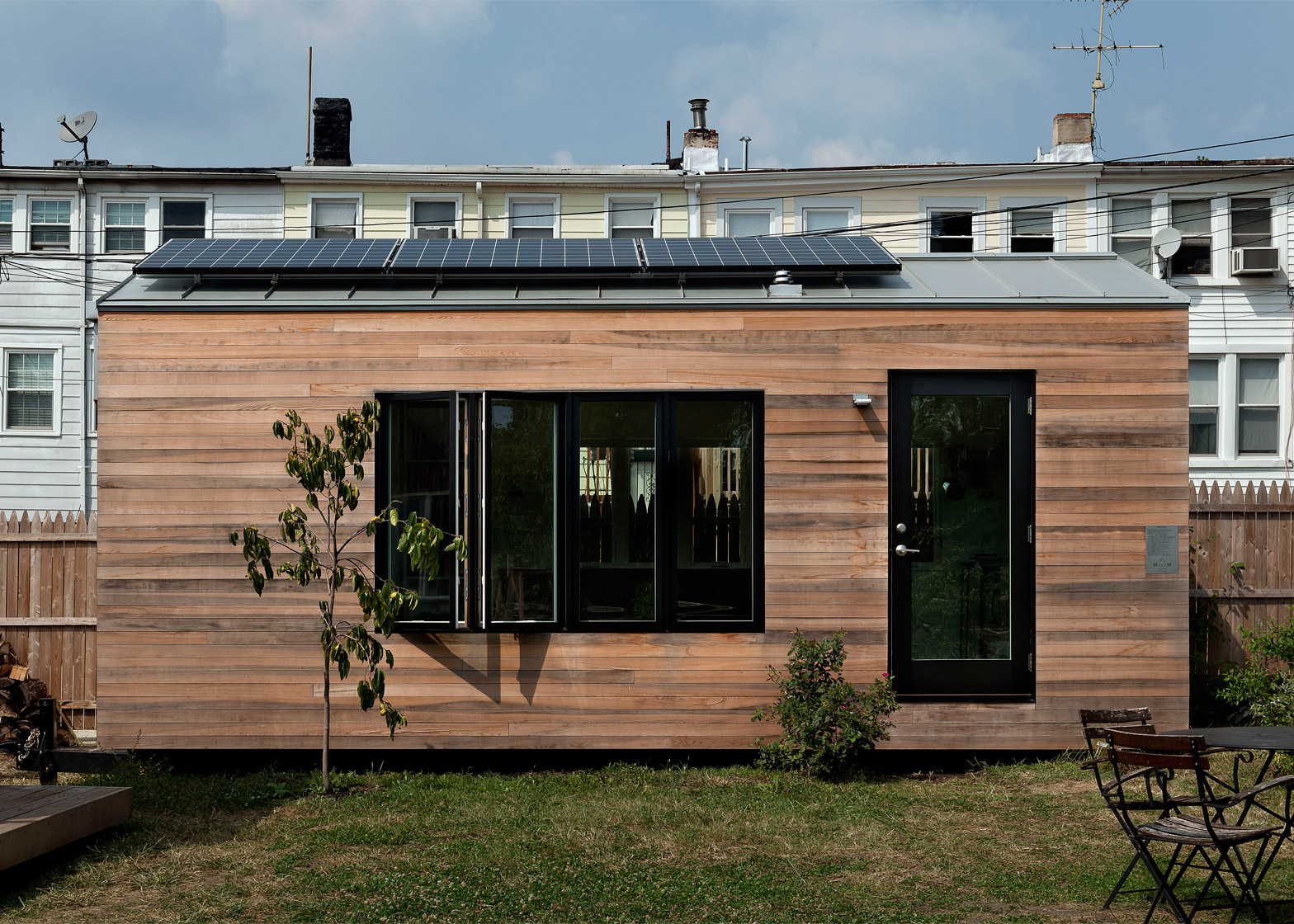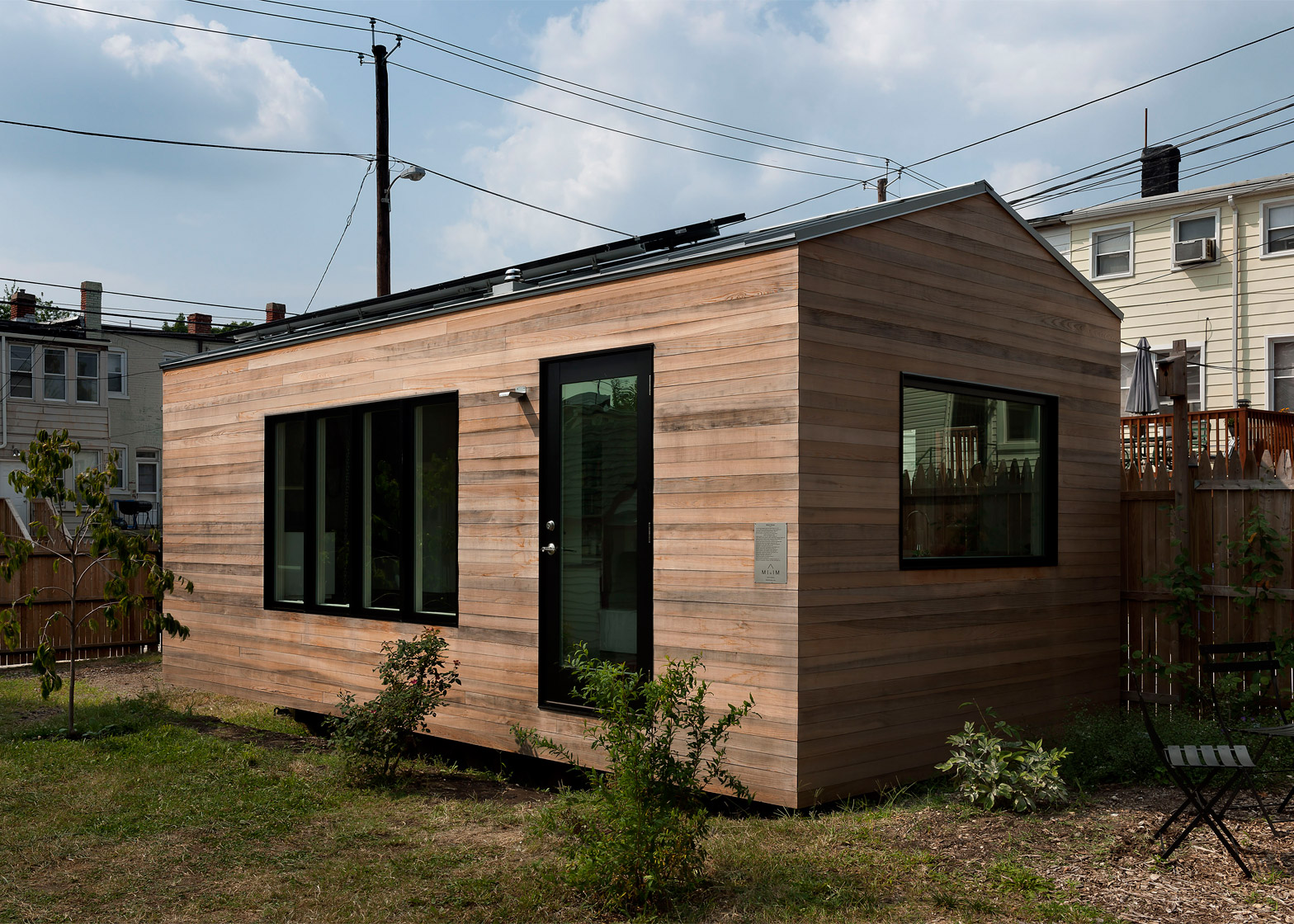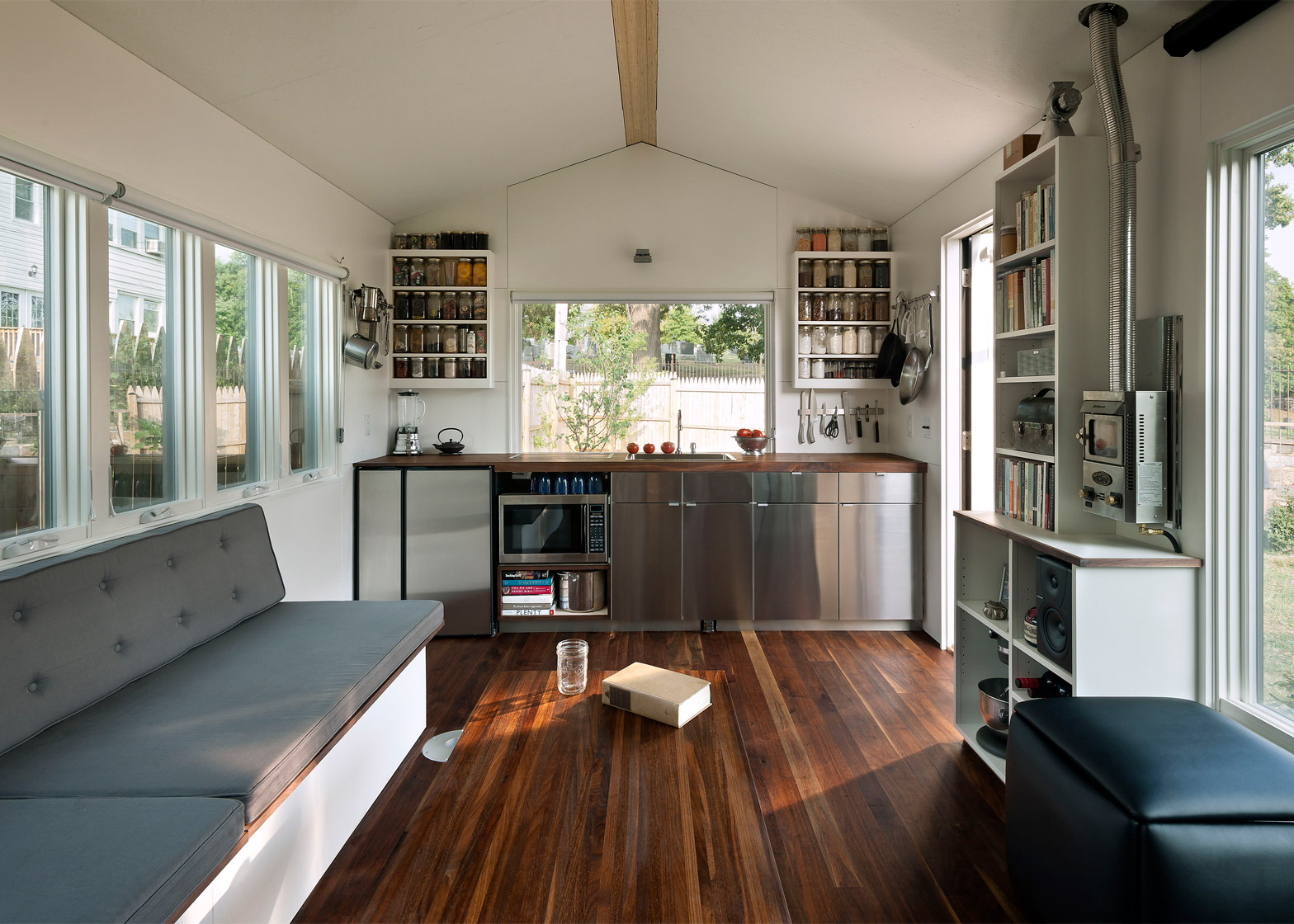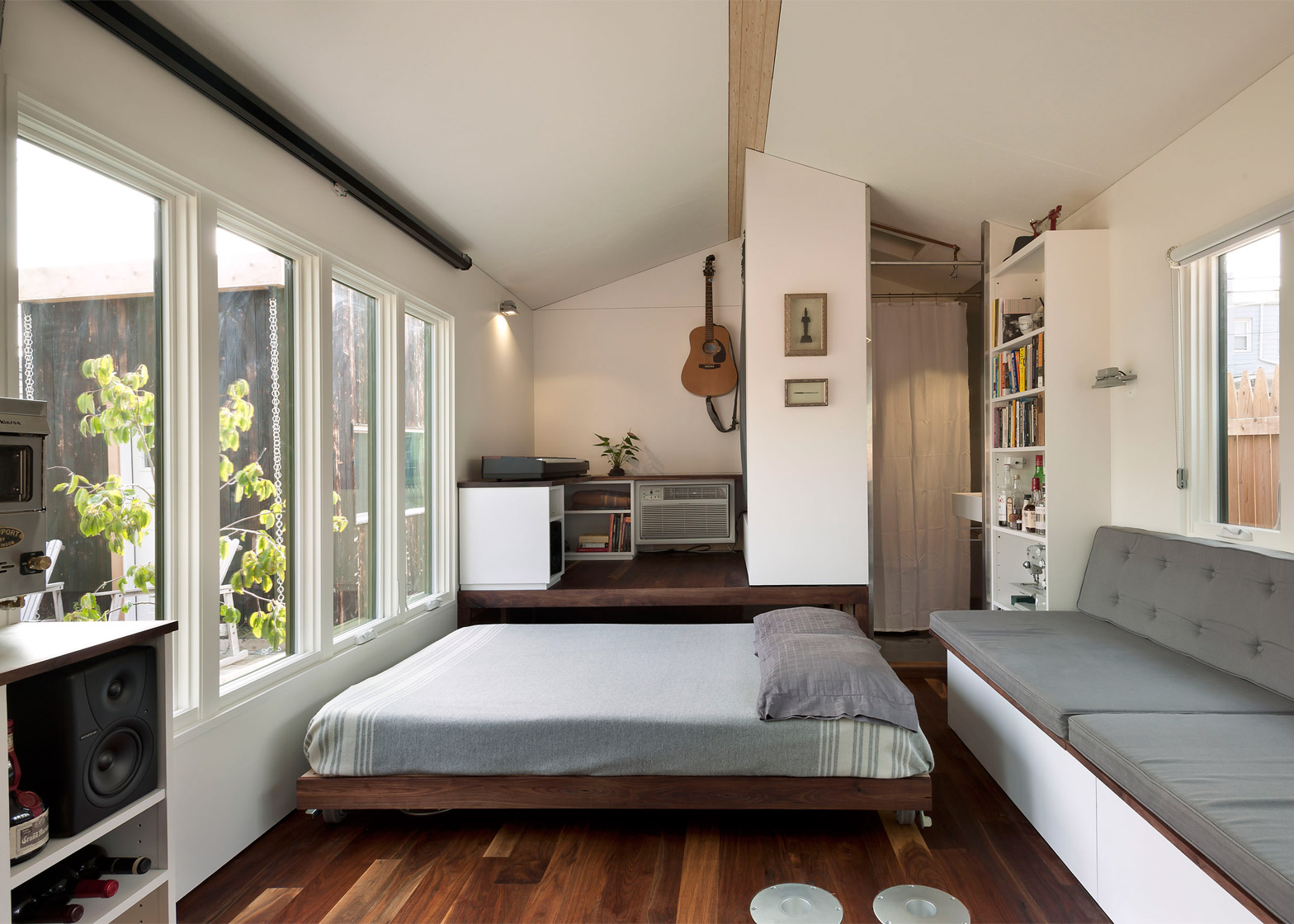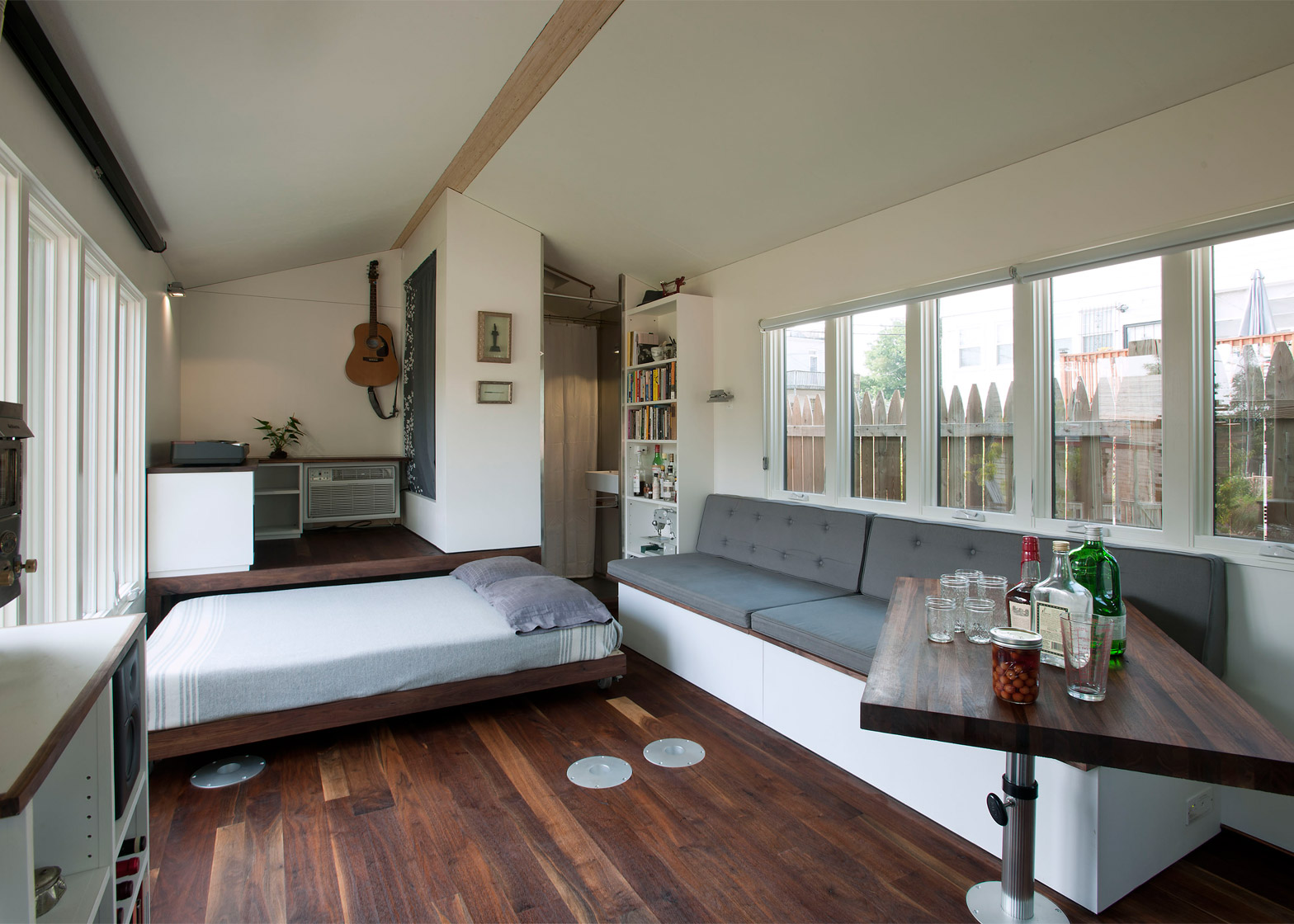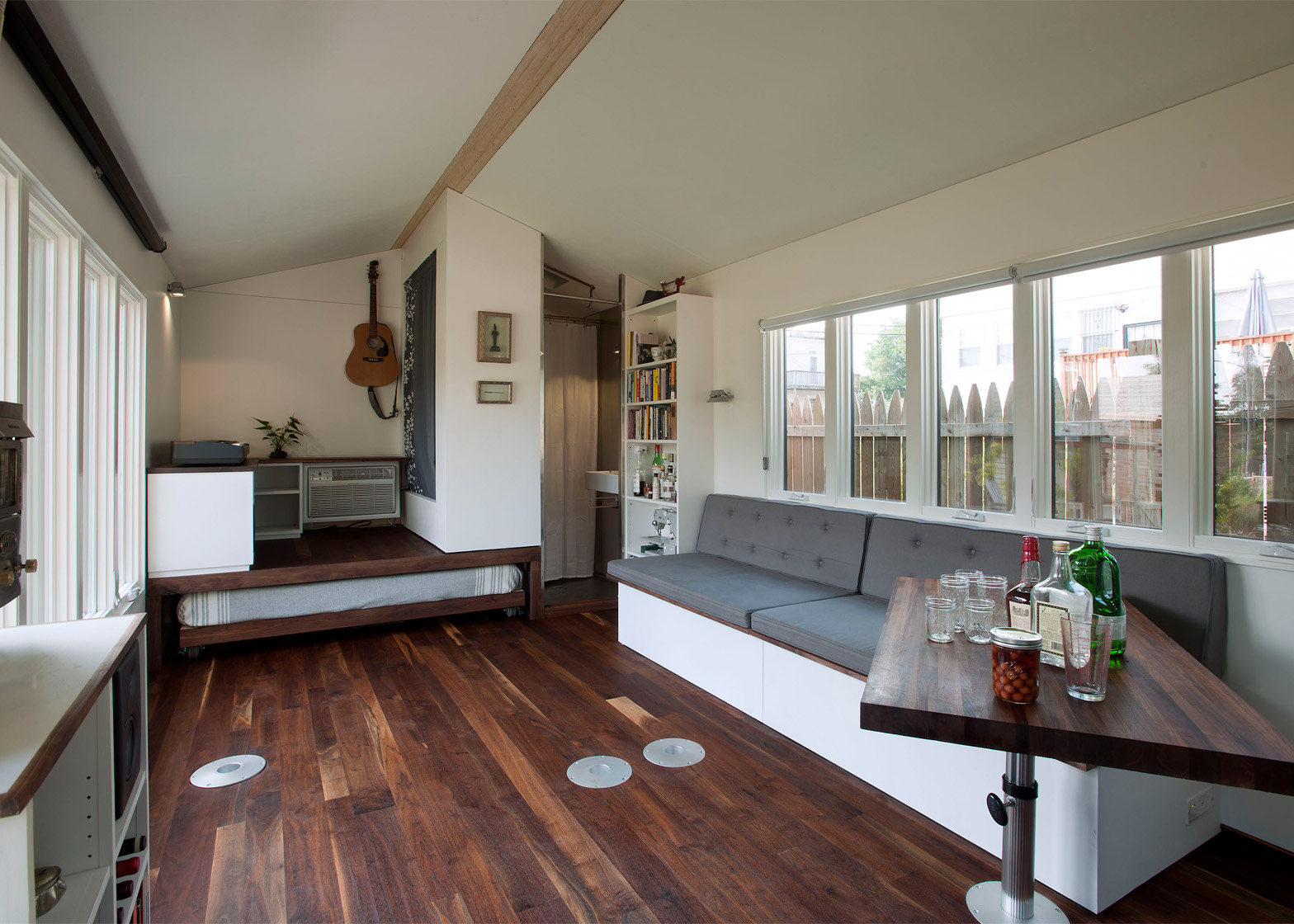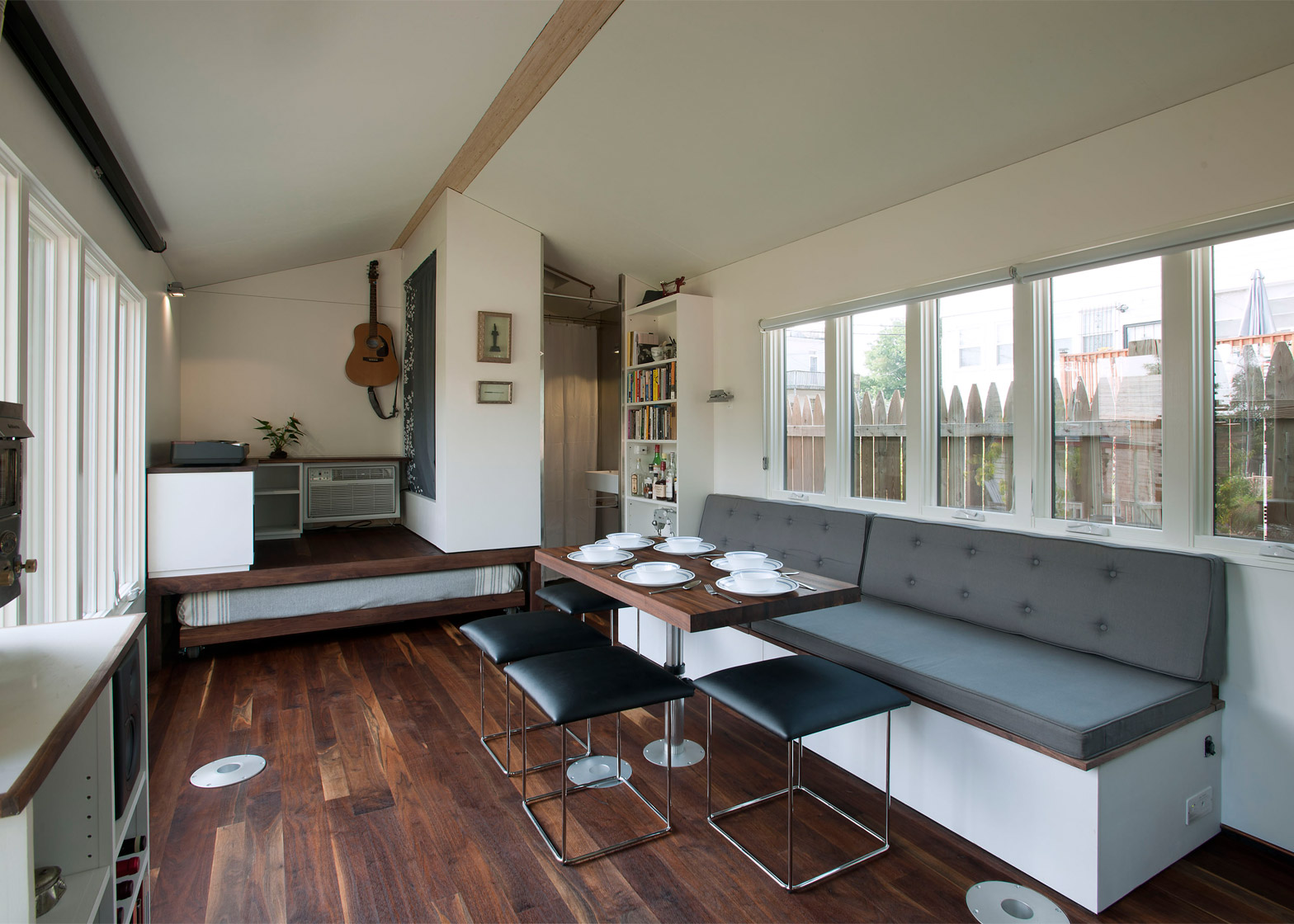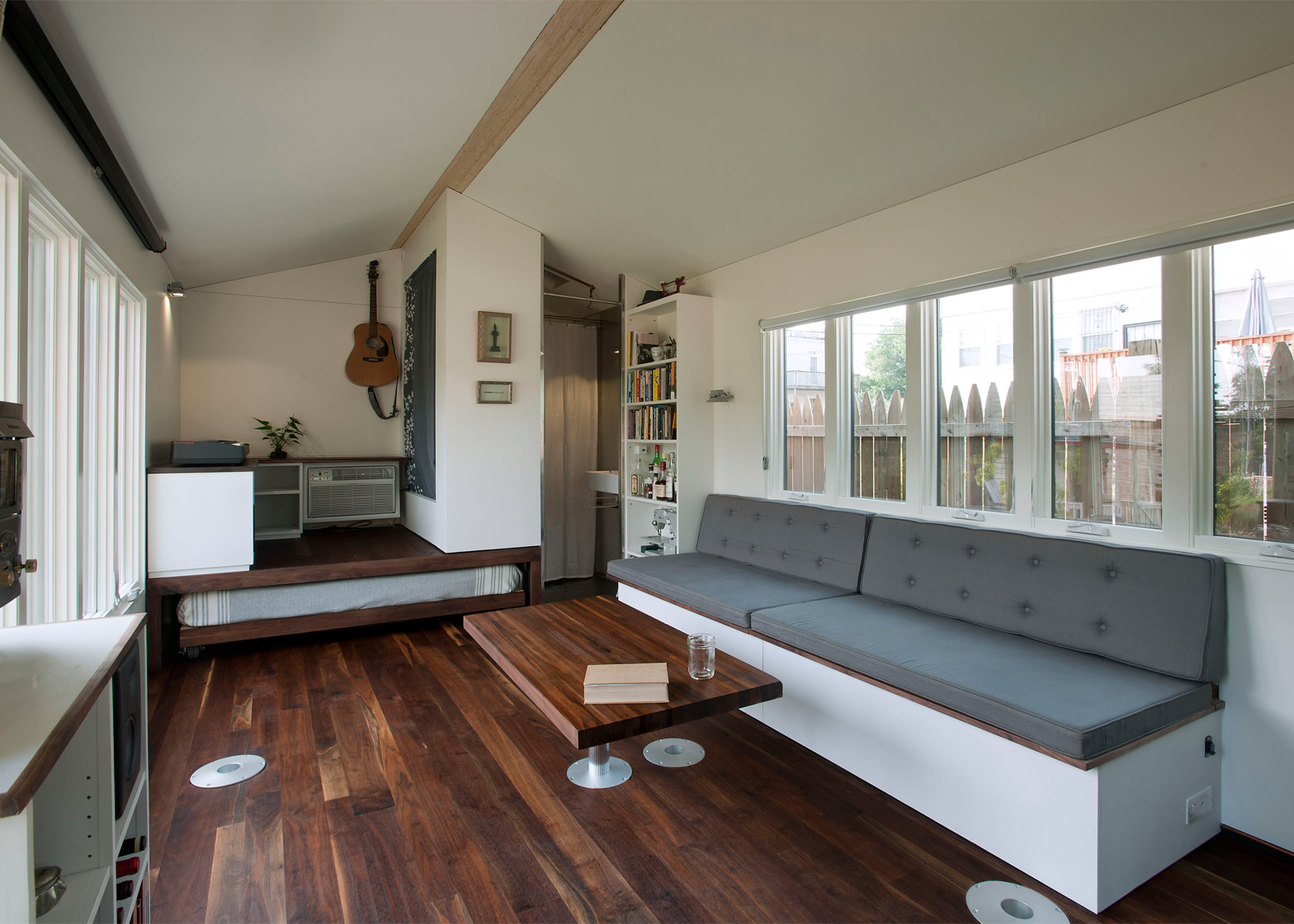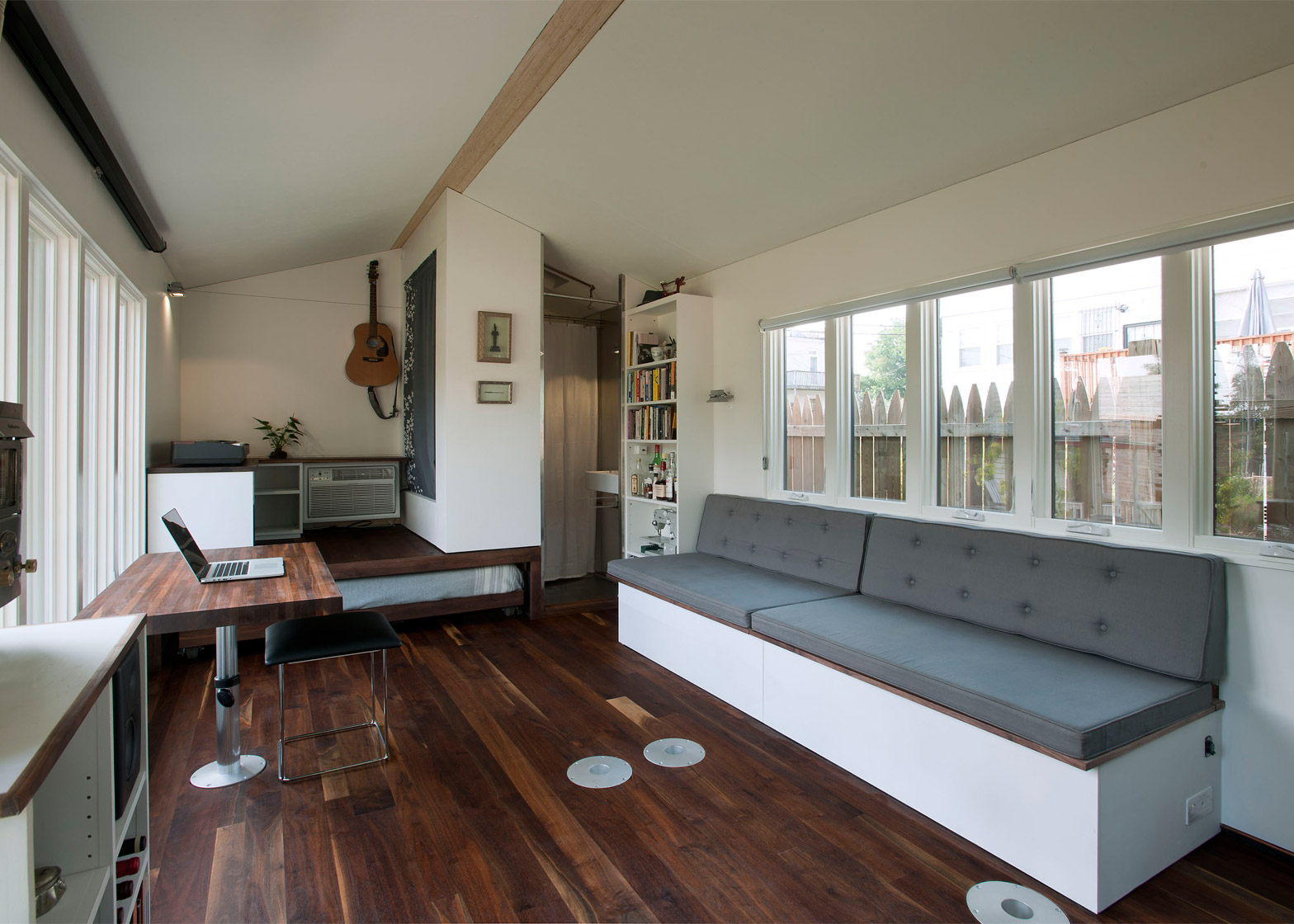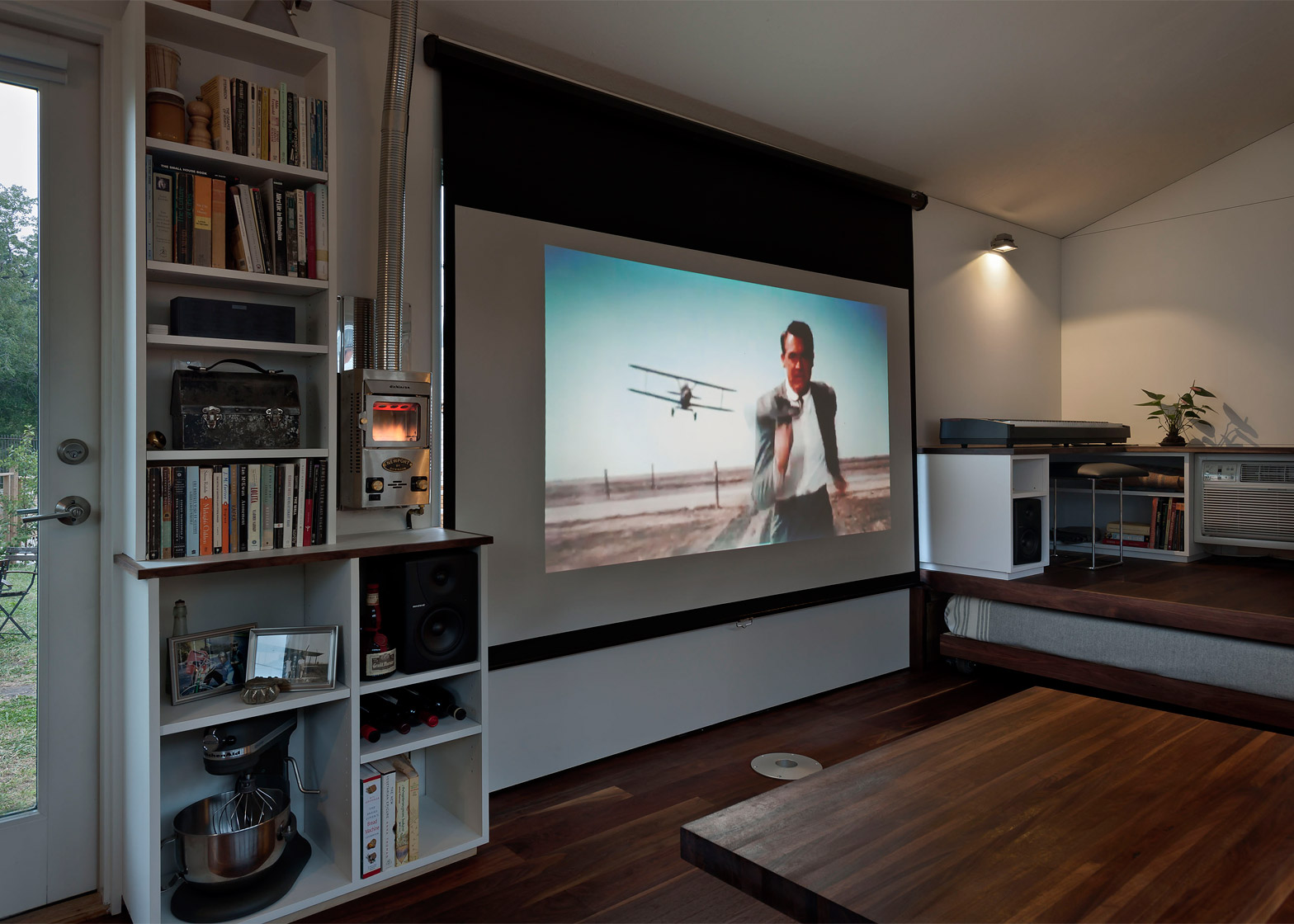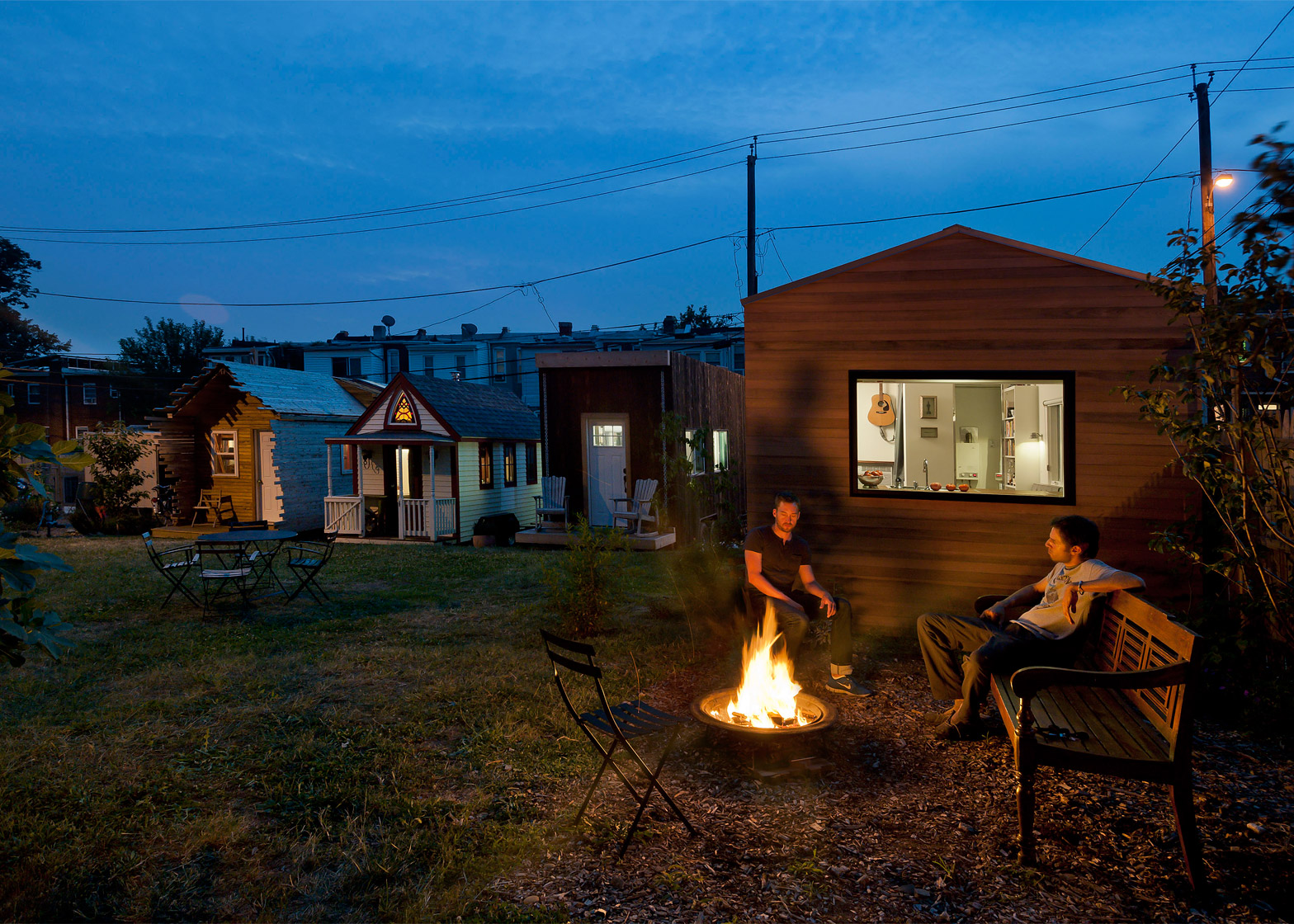Anyone wanting to construct their own tiny house can now buy detailed plans for a micro dwelling designed by Washington DC studio Foundry Architects (+ slideshow).
The Minim House — its name taken from the word "minimal" – contains a kitchen and bathroom, along with areas for sleeping, working, lounging and dining.
There are two models. One encompasses 210 square feet (19 square metres) and is meant to be mounted to a trailer, while the other totals 265 square feet (25 square metres) and sits atop a permanent foundation.
The first Minim House, unveiled in 2013, was designed by Foundry Architects in collaboration with entrepreneur Brian Levy and the construction firm Element Design+Build. The team is based in Washington DC.
The initial endeavour evolved into a company, Minim Homes, led by Levy.
Detailed house plans – including elevations, sections, construction guidelines and annotated build photos – are now available for purchase for $495 (£377), enabling people to construct their own micro home. The company also intends to manufacture the dwellings and sell them for approximately $70,000 (£53,290).
Other companies that sell plans for micro dwellings include hOMe, started by an Oregon couple, and Tumbleweed, established in 1999 in California.
The team hopes to advance tiny house design by creating a complete living unit that ranks high on function and aesthetics, and low on environmental impact.
"Tiny houses have begun to attract a segment of the population that wants to live lightly on the land and with few possessions," said Foundry Architects. "However, many of the houses often feel cramped, or worse, just uncomfortable."
The flexible interior design of the Minim House enables it to house all the programmatic requirements "in inventive and surprising ways".
"The openness of the plan is key to the project's modern aesthetic and comfortable living," the architect said. "It lives much 'larger' than its minuscule footprint."
The home's energy-efficient building envelope consists of structurally insulated panels (SIPS) that are clad in cedar boards. A ridge beam supports the roof, which is covered with solar panels.
Once all of the components are on-site, the house can be constructed within a couple of days.
For the interior design, the team took cues from ship cabins, where space is extremely limited. "No detail can go unnoticed in a house this size," the team said. "Every dimension and function matters because there is no room to spare."
Rather than creating a sleeping loft – a common feature in tiny houses – the team installed a retractable bed on wheels that sits underneath a work area.
A tabletop made of reclaimed walnut can be easily moved around the house and can serve as a dining table, coffee table, bartop or computer desk.
Other interior features include wood flooring, stainless steel cabinetry and a built-in couch.
The home contains an incinerating toilet that converts waste into ash, which negates the need for connection to a septic system.
Related stories: see more open-design projects and design featuring open-sourced parts
Rooftop solar panels provide the energy needed to power the dwelling. The energy is converted into usable electricity via an inverter in the main closet. Extra energy can be stored in batteries.
Concealed rooftop gutters collect rainwater and send it to a three-step ceramic filtration system, which makes the water potable. Up to 40 gallons (151 litres) of filtered water can be stored at a time. A propane unit heats water on-demand.
The home can be mechanically cooled or heated if necessary. "During summer months, if cooling is needed, a thru-wall air conditioning unit located on the west elevation is turned on," the team explained. "During the winter, a wall-mounted propane stove heats the space."
The mobile version of Minim House is intended to sit atop a heavy-duty custom trailer. The full home, including furnishings, was designed to meet the trailer's weight limit of 14,000 pounds (6,350 kilograms).
Because it is mobile, the home had to be designed in accordance with guidelines issued by the US transportation department. Additionally, interior elements must be able to withstand stresses such as torque, vibrations and tangential loading.
"As just one example, drywall was abandoned as a potential finish for the interior walls and painted plywood was used instead," the architect explained.
According to Minim Houses, about 60 sets of plans have been sent around the world, with homes under construction in Australia, New Zealand, Canada and throughout the US.
Other tiny homes include a prefabricated dwelling by Estonian design collective Kodasema that allows its residents to move to a new location in less than a day and a collection of micro vacation homes by Harvard students that are intended for stressed-out city dwellers.

